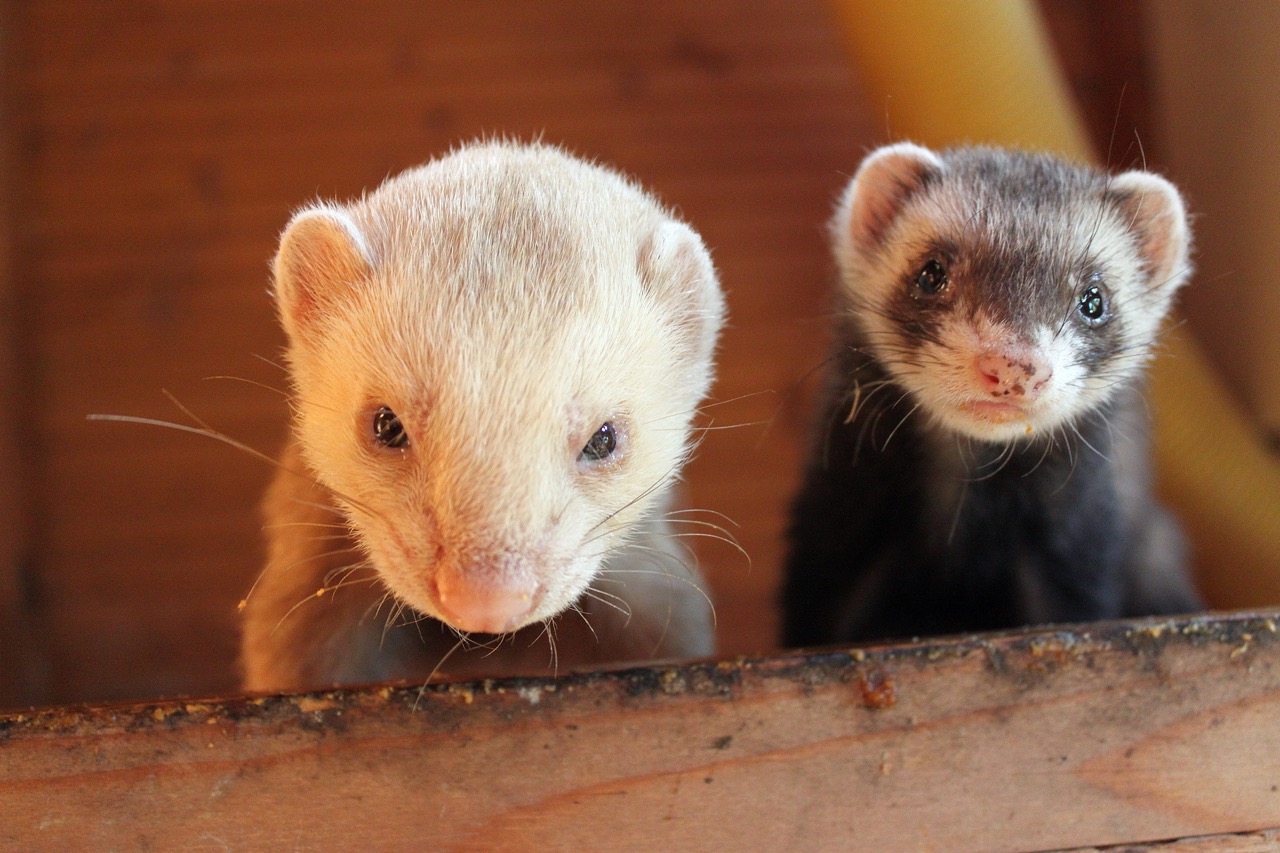Choosing the right cage for your ferret is a critical aspect of responsible pet ownership. Ferrets, known for their playful and inquisitive nature, require an environment that not only accommodates their size but also caters to their behavioral needs. A well-selected cage enhances their quality of life, promotes health, and ensures they thrive in a safe, stimulating environment. This article delves into the importance of choosing the right cage for your ferret’s size, providing insights on their housing needs, cage dimensions, key features to consider, and the overall benefits of proper cage selection.
Understanding Ferret Sizes and Their Housing Needs
Ferrets come in various sizes, typically weighing between 1 to 4 pounds and measuring around 18 to 24 inches in length, including their tail. This size variation is often influenced by factors such as breed, age, and overall health. Understanding the specific needs of your ferret based on its size is crucial for providing an appropriate habitat. A cage that is too small can restrict movement and lead to behavioral issues, while a cage that is too large may make it challenging for them to feel secure.
Ferrets are highly energetic and require ample space to explore and play. They are naturally curious creatures that enjoy climbing, tunneling, and interacting with their environment. For this reason, a cage must offer vertical space in addition to horizontal room. A multi-level cage with ramps and shelves can provide enrichment and exercise opportunities, fostering a stimulating environment that caters to their natural instincts.
Furthermore, the housing needs of ferrets change as they grow and develop. Young ferrets may require different accommodations than fully grown adults. When selecting a cage, consider the potential adult size of your pet to ensure that the housing will remain suitable throughout its life. Providing the right environment from the start is essential for their long-term well-being and happiness.
Assessing Cage Dimensions for Optimal Ferret Comfort
When choosing a cage, it is vital to assess the dimensions carefully to ensure it meets the needs of your ferret. A general guideline for a single ferret is a minimum cage size of 24 inches wide by 24 inches deep by 36 inches tall. However, larger cages are always preferable, especially for multiple ferrets, as they thrive in social settings. Adequate space allows ferrets to engage in natural behaviors such as climbing, playing, and resting comfortably.
Vertical space is just as important as horizontal space; ferrets are adept climbers and enjoy exploring different levels. Cages with multiple platforms and ramps encourage physical activity and mental engagement. When assessing cage dimensions, consider incorporating levels that are spaced closely enough to allow your ferret to navigate safely without risking injury.
In addition to overall dimensions, the layout of the cage should also be evaluated. Ensure that there is enough space for bedding, litter boxes, food and water dishes, and toys. A well-thought-out interior can prevent overcrowding and create a more inviting environment where your ferret can express its natural behaviors and feel secure.
Key Features to Consider When Choosing a Cage
Apart from dimensions, several features should be considered when selecting a cage for your ferret. First and foremost, the material of the cage is crucial. Ferrets are notorious for their chewing habits, so it’s essential to choose a cage made from durable, non-toxic materials that can withstand their playful nature. Metal cages with removable trays for easy cleaning are often recommended, as they provide durability and hygiene.
Another critical feature is the accessibility of the cage. Look for designs with large doors for easy access, making it simple to interact with your ferret, clean the cage, and refill food and water. Additionally, ensure that the cage has secure latches to prevent escape, as ferrets are skilled at finding ways to wiggle out of enclosures. Escape-proof designs will help keep your ferret safe while allowing for freedom within their space.
Lastly, consider the spacing between the bars of the cage. The bars should be close enough together to prevent your ferret from slipping through but also allow for adequate ventilation. Typically, a spacing of 1 to 2 inches is recommended. Proper ventilation is essential for maintaining a healthy environment, reducing the buildup of odors and humidity that can lead to health issues.
Benefits of Proper Cage Selection for Ferret Well-being
Selecting the right cage for your ferret has far-reaching implications for its overall well-being. A well-sized and thoughtfully designed cage can reduce stress and anxiety in your pet. Ferrets are social animals that thrive on interaction, and a comfortable cage allows them to feel secure while also providing a space to play and explore. This balance of security and stimulation is crucial for their happiness and mental health.
Proper cage selection can also lead to improved physical health. A spacious and engaging environment encourages exercise and play, which are essential for maintaining a healthy weight and muscle tone in ferrets. Without adequate room to move and explore, ferrets may become sedentary, leading to obesity and other health issues. Furthermore, a clean and well-ventilated cage helps minimize the risk of respiratory infections and other health problems often associated with overcrowded or unsanitary living conditions.
Lastly, investing time and effort into choosing the right cage fosters a stronger bond between you and your ferret. A well-suited environment allows for more interactive play and engagement, leading to a happier pet and a more fulfilling companionship. When your ferret feels safe and comfortable in its home, it becomes more confident, resulting in a playful and sociable demeanor that enriches the lives of both the pet and its owner.
In conclusion, selecting the right cage for your ferret’s size is a vital decision that significantly impacts their quality of life. Understanding ferret sizes and their specific housing needs is the first step in making an informed choice. Assessing cage dimensions, considering key features, and recognizing the benefits of proper cage selection are all integral to promoting your ferret’s well-being. By investing time and resources into providing a suitable living environment, you not only enhance your ferret’s happiness but also create a thriving, interactive relationship that benefits both of you.










